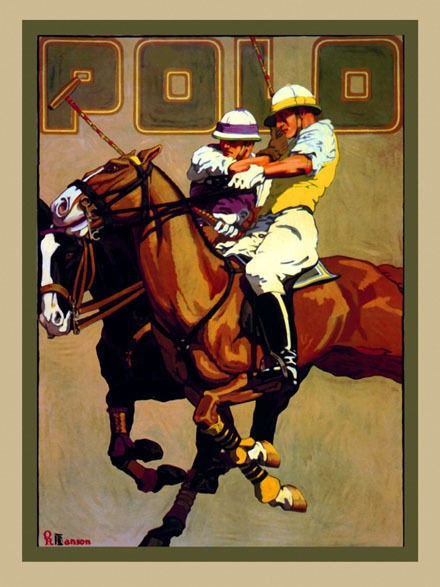Sports used to be a healthy diversion for us. The amateur status was held in high esteem based on the ethos sana in corpore sano, meaning “a sound mind in a sound body.” In sports, professionalism was frowned upon.
Somewhere along the line all that changed. Sports became big business.
In 1968 the major tennis tournaments allowed professional players to participate and compete for prize money alongside the amateurs. In 1988 professional athletes were finally allowed into in the Olympics. Television and advertising began to control sports. Nowadays some athletes make over $80 million a year, and sign contracts worth hundreds of millions of dollars. Television advertisement spots at the Super Bowl can command prices of over $4 million per minute. Money is now the yardstick of sports.
Polo has also been affected by this change towards professionalism. Polo is the ultimate luxury sport. Despite what some people try to sell to the public, playing polo is still very expensive, reserved still for the rich. To play this game, one needs a considerably large disposable income or reserve fund. A polo pony will run about $15,000 – $20,000 and upwards. To play four periods of play (each period called a chukker) a player will need 6 horses, using a new horse for each chukker and having horses in reserve in case of lameness and illnesses. That is just the beginning of the costs. Stabling each horse at around $500 a horse per month, horseshoes, veterinary costs, transportation to games, club membership fees, and many other costs bring the annual outlay to perhaps $50,000 and more. Spectators, who are often friends of the players, tend to be wealthy as well. Birds of a feather flock together.
Fot this reason, businesses have aligned themselves with the sport of polo. This appears in many forms. Companies and rich individuals sponsor both tournaments and teams. Businessmen and women attend polo venues to create new business opportunities, knowing that their target market will also be in attendance. Luxury brands use the sport of polo to enhance the image of their products. Even charities make their pitches at polo events, knowing that attendees have deep pockets.
The days of the amateur are over, in polo as well as in other sports. However, this offers opportunities for businesses to grow along with the sport of polo. Some polo tournaments, can attract 20,000 spectators on a day. Polo is covered on television and in fashionable magazines. No other sport offers the combination of glamour, excitement, danger and exclusivity, all in a format that can be viewed live and close up.
Over the ensuing weeks, this new series of articles, entitled Polo & Business, will give you a glimpse into how business has affected this exciting sport. You may even be inspired to utilize these ideas for your own needs.
The topics will cover:
– Polo & The Automobile
– Polo & Advertising
– Polo & Beverages
– Polo & Timepieces
– Polo & Sponsorships
– Polo & Teamwork Building in a company
– Polo & Charities
– Polo: The Perfect Business Meeting Place
Make sure to follow these topics. You business may depend upon it!
An article by John Francis Jackson
About the author :
The author, John Francis Jackson, is an American living in Argentina. Although he works as a business advisor, his passion is polo, a game he both plays and writes about. He also raises and sells polo ponies. You can find more about him at LinkedIn or at http://maltesecatpolo.wordpress.com/


